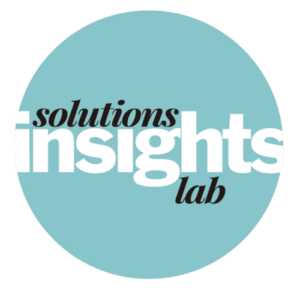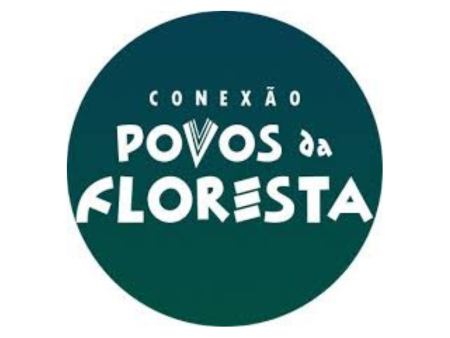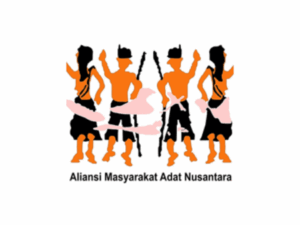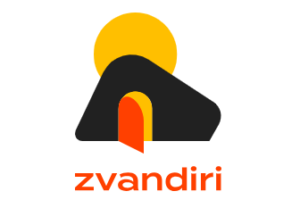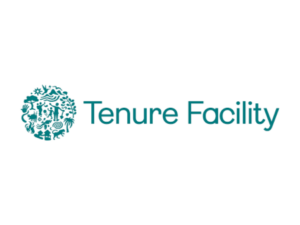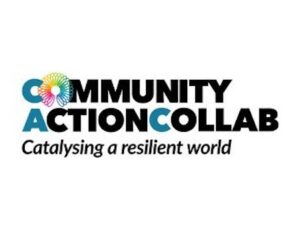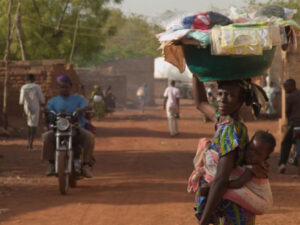Conexão Povos da Floresta supports the socio-economic, cultural, and digital inclusion of traditional peoples and communities, in support of the Connection Peoples of the Forest Network, contributing to the defense, preservation, and conservation of the environment, the promotion of sustainable development, and human rights.
Juliana Dib Rezende of Conexão Povos da Floresta spoke with Ambika Samarthya-Howard on June 27, 2025. Click here to read the full conversation with insights highlighted.
Ambika Samarthya-Howard: You’re familiar with this work. I would love to hear more about how your organization works and your approach, and how you work with other people who do coalition-building, like NOSSAS and Amazônia de Pé. How do you see yourself in the ecosystem?
Juliana Dib Rezende: How Connect Forest People is structured in this network model is similar to what Amazônia de Pé is doing. They are part of the Connect Forest People Network, and we’ve done a lot of things together.
Connect Forest People is both the organization and the initiative. We have a legal and managerial structure, the Connect Forest People Institute, that sustains the operations, but the initiative itself is the network, the project, the movement.
We have five working groups in the network to create programs that deliver benefits to the communities. Connect Forest People is much more than just internet access or connectivity. We see ourselves as a safe harbor for remote communities around safety, the internet, and inclusion.
MapBiomas data shows that less than 1% of Amazon deforestation occurs in protected territories — Indigenous, quilombolas [Afro-descendant Brazilian communities], extractive reserves, and riverside lands.
Those people are the guardians of the remaining forest of the Amazon. We’ve done a study of when 4G and 5G coverage would be available for those communities, and less than 1% would be covered by telecom services by 2030. Around that same time the satellite internet started working in the Amazon, and partners like the Social Environmental Institute, Iepê Institute, and others, looked to get a better and safer internet connection for those communities.
The project is clustered, with partners in Amapá, Amazonas, Pará, and other regions of the state of Amazonas. The Coordination of Indigenous Organizations of the Brazilian Amazon (COIAB), the National Coordination of the Articulation of Black Rural Quilombola Communities (CONAQ), and the National Council of Extractive Populations (CNS), which are the three institutional representative organizations of the forest people in the Amazon, came together with Tasso Azevedo in 2022, and wanted to make an umbrella network that embraces all communities in the Amazon. We have forest peoples, and it’s dangerous to think about international inclusion from an individual standpoint instead of a collective standpoint.
The network was created by the end of 2022. The mission is to connect more than 8,500 communities in the Amazon. We have done the mapping, and we project that there are more than a million people protecting more than 120 million hectares of forest. It’s like the size of Germany and France together.
Public data initially identified around 4,500 communities, but after cross-checking with partners, we counted around 8,000. This was a condition for us to ensure why this project is needed, because these communities are living under the invisibility of public policies. No one knows exactly where or who they are, or what kind of infrastructure they have. I see this project through a mapping and digital rights lens, making sure that connectivity is not an end, but a bridge, a transversal thing to ensure the accessibility of rights for the people in the Amazon.
We have over 50 partners to make sure this network works at the infrastructure, community control, and digital inclusion levels.
Ambika Samarthya-Howard: Can you give me an example of how what you’re doing and the connectivity in digital rights translates to climate?
Juliana Dib Rezende: Firstly, we know that less than 1% of the deforestation happens in these territories. Secondly, we know that young people especially want to be connected to what is happening in the world, to be included in partnership and culture, have access to health, make payments, and be in contact with their parents. If they don’t have connectivity, they might leave for the city.
Thirdly, when people stay in their territories, the land is less vulnerable to invasions, illegal mining, and land speculation. If young people and people of productive age have opportunities in their territories, we believe these communities will have a self-governed, self-determined way of development. They’ll be able to build up their skills and become entrepreneurs from their own perspectives.
We believe the people who can maintain the forest are the forest people. It’s not us telling them what sustainable development is. They know much better than we. That’s why we believe connectivity is the bridge that strengthens the communities in their territories. They shouldn’t need to leave to access their public policies, financial inclusion opportunities, and health. In a number of locations in the Amazon, people have to take a 10-day boat trip to get their prenatal consultations.
Ambika Samarthya-Howard: How do you work with the government? How do you work with the Brazilian Association of Members of the Public Ministry for the Environment (ABRAMPA)? I spoke to ABRAMPA and different legislators in Pará State, and even the legislator was specifically saying that he does not work with Indigenous and quilombola populations. He works in the realm of illegal deforestation. I’m seeing people like you who are doing deep work in these Indigenous communities, and then there’s everyone else.
Juliana Dib Rezende: Yes. There are two ways to look at this. One way is, as we do with the Ministry of Environment and Climate Change, the Ministry of Health, and the Ministry of Racial Equality in Brazil, we take our information and collaborate with them so they understand who and where these people are. For example, the Ministry of Environment has a program to grant forest-based communities a scholarship, with financial assistance to ensure they use the forest for their own financial sustainability, but they couldn’t reach these people because they weren’t connected. We started doing online classes to educate them about this program.
We’ve created a WhatsApp group for direct contact. We have this communication line that strengthens the relationship to ensure that what they are offering is what they are seeking.
From the infrastructure standpoint, we have partnered with government agencies that have a territory protection program. They wanted to connect it to communities in a high-deforestation area. We’ve done that together because they know it’s hard and dangerous just to put an antenna there. Several sectors of the government have acknowledged that we are among the best options in terms of secure internet and digital inclusion.
Ambika Samarthya-Howard: Can you explain why it’s dangerous to have just the internet there?
Juliana Dib Rezende: Because connectivity without safeguards can do harm. When we send the connectivity kit, for example, we send the full program where pornography, bets, and downloads of copyrighted content are blocked. When we bring the internet completely open without a secure environment for people to get capacity building programs, online classes, and all the structured projects that we develop under our digital inclusion environmental pillar, they will get into this huge world out of their context, and can get lost in social media and pornography.
Also, a study shows that in Brazil, around 20% of the main welfare assistance is lost through bets for the indigenous population. There is no awareness and consciousness of the power of using technology for social transformation. Whereas, that is our main goal when we talk about using connectivity as a collective mindset. People will get connected to the secure network through their login and password.
Ambika Samarthya-Howard: Has it been hard to convince people to use the technology?
Juliana Dib Rezende: Yes, I think there are two sides to it. From an infrastructure standpoint, logistics in the Amazon is tricky. That’s why installation and activation are carried out by Indigenous, quilombola, and Ribeirinho people themselves from the organizations. They are the ones who know how to gather the territory. It’s not us, white people, going there and doing the whole thing. We have around 50 technicians who have been trained to plug into that, and all the operational processes were co-created with the community.
We do have a line of activating all the kits, but this is all done by the forest people and the technicians, because they know how to get there. They know how to navigate those rivers without getting lost. They have appropriated the technology, but logistics is hard. When we talk about climate change, for example, the drought period starts around September and becomes worse and worse each year.
Some communities will be completely isolated after the drought starts. We prioritize mapping communities in areas at risk of being isolated in the connectivity roadmap. For the communities that already know how to use the internet, because they’ve been to the city and they know how addictive social media can be, all this education takes time. We understand that, and we show how the internet can be used for a better goal. We’ve seen people who have come back to study.
We’ve seen communities that have been using it for territorial protection and making sure they prioritize that instead of being on YouTube or TikTok the whole day. It’s a process for them to understand this is not a personal internet hotspot, but much more a collective network.
Ambika Samarthya-Howard: Where and how does the work that you’re doing relate to economics? Does the internet that you’re providing give them other economic opportunities?
Juliana Dib Rezende: We try to find ways to get there, and we know how difficult it is because most of these communities aren’t prepared for the market. There is a different mindset of what the market and money are. Capitalism is not quite there in the forest yet. That’s why we created a working group on entrepreneurship. For them to know what marketing is, how to open their own business, and how to manage their taxes. Besides that, we have around two to three big classes per month that cover diverse topics, for example about child rights, nutrition, drought and climate change, and computer use.
One topic is about paying taxes, for example. We go into the basics because people talk about a high level of bioeconomy, but quilombola people will say, bioeconomy is just existing here.
I remember when we started the project, and talked about what we expected from each working group, one of the quilombola leaders said, I wish I could pay my bill through what I plant. That’s it.
Ambika Samarthya-Howard: Then what do you say?
Juliana Dib Rezende: We talk mostly about how these public policies work in Brazil. Who has to pay their taxes, and why do we have to pay taxes? We have over 50 partners, and we have specific partners from each working group with subject experts. They explain that for people who earn up, who live in protected territory, or do certain things, taxes are waived. You have to pay attention if you open your company. The idea is to connect the dots so that communities can navigate these systems. Whereas most of the communities are underneath this point, and we are there to make sure they get the right information.
Ambika Samarthya-Howard: That makes sense because it’s a supply and demand issue. It’s not like just because you’re making things, you know how to put them out there, package and sell them. The whole thing is complicated.
Juliana Dib Rezende: Yes. For example, right now, I’m in negotiation and conversation with an international company that works with local cooperatives to have their supply chain down to the forest communities. They are struggling to follow all the rules and standards, and ensure they use the online project and products they have.
Our 360-degree look is made to acknowledge these communities, and their know-how to leverage their digital skills into the supply chain of this specific company. We have so far more than 1,900 communities connected. We want to end this year with 2,500. Let’s see. In the first week of August, in Manaus, we’re having our second encounter with the network partners, which will be focused on integration with public policies.
Two days before, from Monday to Wednesday, we are going to have a digital skills workshop for 300 facilitators, the people responsible for the usage rules and how the connectivity has been used in the communities, to ensure they go through the Digital Wisdom course.
Across three days, we are going to talk about digital skills, digital safety, email use, fraud, password protection, and all that. More than 250 people will be coming to the same place, at the same time. We are very excited for this week.
We have invited over 50 government agencies, and all financial stakeholders have supported the project. The operational and institutional members of the network, and 40 so-called champion facilitators. The champions facilitators have done more than one time the Digital Wisdom course and engaged in our health working group. Telemedicine is already happening in their territories.
Ambika Samarthya-Howard: How does that relate to COP or to any of the greater climate messaging?
Juliana Dib Rezende: We are involved in COP. We support all our partners who are there to make sure what they are sharing during COP is also available online to the communities. With a partner that is based in Amazon, called Foundation for Amazon Sustainability (FAS), the communities are going to create a collaboration document to bring [president] Lula a mitigation plan for climate change from the territory standpoint. We expect that all of our communities contribute to that process and participate in the online activities from FAS.
Ambika Samarthya-Howard: How do you bring 1,800 communities to do one document?
Juliana Dib Rezende: We collect input through WhatsApp groups, our intranet, and monthly online classes with up to 200 participants. FAS coordinates directly with communities near Manaus, and we extend that work online so that voices across the Amazon are included.
Ambika Samarthya-Howard: How does this relate to some of the work that Amazônia de Pé is doing? Do you work closely with Daniela Orofino of NOSSAS?
Juliana Dib Rezende: We are close with NOSSAS. They are part of the education working group, where they have climate change-specific content being taught in Indigenous, quilombolas, and riverside schools. We make it available for schools that are part of communities connected in the Connect Forest People Network.
Ambika Samarthya-Howard: Do you work closely together in terms of the audience for the schools and the audience for the digital stuff?
Juliana Dib Rezende: Yes. We think about all of that. For example, how can election information be made available for these communities? Where should they go to vote? We are doing this kind of education about the electoral process next year.
Ambika Samarthya-Howard: Where are you seeing the work in the next three years? Specifically, who funds you? What’s your current funding model, and how has it changed with the demise of everything?
Juliana Dib Rezende: Today, we are 100% funded by philanthropic resources. Our base is through donations from foundations and institutes. We want to go towards public policy integration since we see digital rights as part of public policy rights. The government should be the one doing what we’re doing. That’s why we want to be close to them, so they can learn how it can be done. We don’t have that much time.
We live right now in this world where we have to break through this line of one person deciding for everything, and believe and trust these communities. They know what is best for them.
Ambika Samarthya-Howard: What do you think are the two things that would make your work easier, more efficient? Where do you see this going in the next few years, and what do you need to get you there?
Juliana Dib Rezende: I wish we could have broader options for this kind of technology and make it more accessible. It will be a dream to have Brazilian high-speed technology available that is scalable. I would also like more conversation about how digital rights, digital skillsets, and connectivity are interconnected when talking about giving power and choice to the people on the ground. Most of the conversations about climate change are high-level conversations and not accessible to the forest people.
Ambika Samarthya-Howard: In the next three to five years, what would be success for you?
Juliana Dib Rezende: Having forest people doing what I’m doing right now, more and more in the leadership and driving this project to what it has to be, being scalable and independent, and part of public policy in a sustainable way, and making sure they are acknowledged for their own rights.
Ambika Samarthya-Howard: Thank you so much.
Click here to read the full conversation with insights highlighted.
Ambika Samarthya-Howard (she/her) is the Solutions Journalism Network’s Chief Innovation Officer: She leads on innovation and technology, leverages communication platforms for the network strategy and creates cool content. She has an MFA from Columbia’s Film School and has been creating, teaching and writing at the intersection of storytelling and social good for two decades. She has produced content for Current TV, UNICEF, Havas, Praekelt.org, UNICEF, UNFPA, Save the Children, FCDO, Global Integrity and Prism.
* This interview has been edited and condensed.
